The spicy and other benefits of the aji
Why capsaicin it stings?
In Chili, the flavor spicy is originates from a mode different to the of other flavors. Capsaicin is a natural vanilloide that affects Ca ion channels+, which normally causefeeling of pain and heat intense.
The aji... as analgesic??
First printing, it is illogical to think that which produces pain also relieve. However the capsaicin was already used in ancient times to mitigate the pain, even before the arrival of Europeans in America.
In addition to promoting blood circulation, capsaicin acts directly on nerve cells. Normally, as a result of the consumption of capsaicin, the neurons expel neurotransmitters.
After eating a certain amount of chili, a Ceviche for example, neurons issued such a quantity of neurotransmitters that pain ends up giving. Some studies have found that capsaicin is especially effective in cases of rheumatism, back pain and low back pain. But don't forget: first talk to your doctor.
The sense of taste or stomach damage chili?
Despite eating regularly pepper, our sensitivity to the chili will not decrease. The only thing that could happen is that one gets used to the chili. Meals without spicy will be enjoyed as before, not found the aji numbs our sense of taste or restrict us to appreciate other flavors.
On the other hand, Chili normally does not affect the stomach mucosa. On the other hand, the consumption of hot pepper serves antacid and thus, reduces A little bit the risk of developing stomach ulcers.
However the most important function of the aji is accelerate the metabolic rate and stimulate blood circulation. The pepper and paprika (paprika) they contain in addition abundant vitamin C (Ascorbic acid). To take advantage of the vitamin content of the pepper and paprika, they should eat is fresh or not so cooked.
There are no as fire
Is often the case that, even the most experienced comeajies, It underestimates the spicy sauce or a pepper and then simply felt fire in the mouth. Against that feeling I have not found an effective and universal method, the most usual is to drink a glass of cold water.
However, there are opinions contrary to the respect. Some say that the cold sharpens the burning sensation in the mouth, water not diluted capsaicin but distributes it by it. Those who share this opinion recommended to drink milk, because milk contains fat, which diluted the Fiery substance.
A third opinion suggests eating bread or rice (No sauce), i.e. foods that absorb fat where capsaicin is. For all modes, If you already ate very piquant most likely have to put up with it.
Finally if you prepare a very spicy soup, add more water or more potatoes and if it is a stew prepare more rice or potatoes (According to accompanying you have chosen).
Other uses of capsaicin
Capsaicin is also used as an ingredient in the "pepper spray" that many use to defend against possible aggression or theft. Which hell burning capsaicin in the eyes and an effective remedy is not known so far.
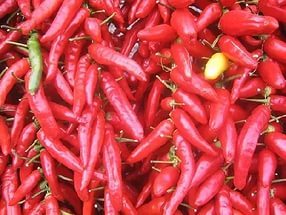
Do you want to know more about capsaicin??
The spiciness is probably the most important feature of peppers. Without the spicy the only plants we would get would be only another kind of peppers (Bell Peppers).
The spiciness comes from a substance called capsaicin and also, to be more specific, of a whole group of similar chemicals: the capsaicinoid. So far as I know, there are seven capsaicinoids.
Not all capsacinoides have the same degree of hotness. True capsaicin and dihydrocapsaicin the are those that determine the level of spiciness in each fruit. Capsaicin is an alkaloid. In its purest form is colourless, odourless and with the exception of the spicy is tasteless. Powder turns white.
Why then are the peppers red colored, so vivid oranges? Because the aji as other plants also owns carotenoid, What gives these reddish colors and oranges. Capsaicin is not soluble in water, in the contrary case is it in alcohol or oil. That is the reason why Cook ajies oils or alcohol are used to. Pepper sauces for example have as base oil.
In a book I read that you can get pure capsaicin. How? the peppers must be liquefied, then let them rest in alcohol and then filter the alcohol. Then the remaining liquid should be cooked over low heat until it evaporates. Well the truth I don't know for what is pure capsaicin, because of the above lines above, by itself it is odorless, tasteless and colourless. It only stings.
Capsaicin is found mainly in the veins of the aji, they are always whitish, and to a lesser extent in the rest of the fruit.
Degrees of itching and scaling (units) Scoville
After the foregoing, It is even difficult to define the degree of hotness of each chili. Why do?? Because still belonging to the same class peppers vary in hotness and because everyone has different tastes, Some will be more sensitive to capsaicin than others. That is the reason why some like that of chili and others are not. Why some prefer milder peppers and others choose peppers with flavor to fire.
Although this is a topic where taste sends, What complicates an objective classification, There are two different ways to define the degree of spiciness: with the degree of hotness scale and scale (units) Scoville. As previously explained to the peppers of the same class, It grows in the same plant, still in the same field of plantation, they may differ in the degree of hotness.
In general it has been found that the pepper plants that grow with less water, that they had the highest temperatures and settled in places sunny are the spiciest.
A hotness scale is essential in all ways, above all for the industry, in the manufacture of sauces for example. Only will thus be compromised the quality of the product and a relative standardization.
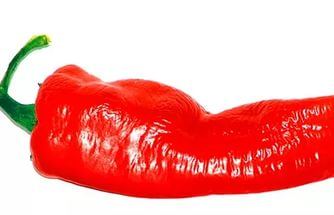
Degrees of hotness
The degree of hotness of a chili pepper is defined on a scale from zero to ten. The classification is subjective. Here are a few examples:
| Degree of hotness | Kind of chili |
|---|---|
| 10 | Habanero, Scotch Bonnet, rocoto |
| 7-9 | various small red peppers, for example the peppers in the North of the Peru or some used in the Chinese and Thai cuisine. |
| 3-6 | pepper green (fresh) Pepperoni, Peperoncini etc. |
| 0 | Paprika (Paprika) |
Scoville scale
In 1912 the chemist Wilbur Scoville was working for the pharmaceutical company Parke, Davis & Co in Detroit, It was there where he developed this scale and gave it its name. In tests conducted by the first peppers are grinded, then he was extracted with alcohol capsaicin and subsequently diluted the substance in a sugar solution until those who participated in the tests not felt any more itching.
So Scoville sought to determine the concentration of capsaicin with the help of chemical reactions. The Scoville scale is one handicap not less: the results of the tests could not carry to classify the itch of all peppers. I.e. carried out sample could not conclude in a universal classification.
Those involved in the tests have different tastes. And the sense of taste is also altered after trying several times the same thing. The contribution of Scoville lies in that let units of measurement.
Today Scoville units will prove more that way but with a high pressure liquid chromatography. This chromatography measures the concentration of capsaicinoids in the aji.
It is a theme a bit technical but interesting, especially given the interest of several readers who raised planting chilli for private or commercial use. The Scoville unit represents a concentration of 6,25·10-6 %, so is the pure capsaicin has 16 million Scoville units.
In subsequent articles I will continue with the theme of plantation, varieties and different applications. For now, see you soon.


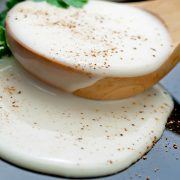
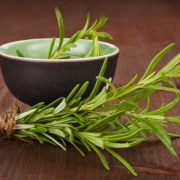

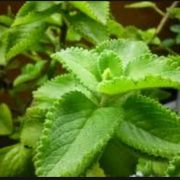
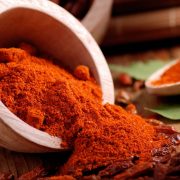

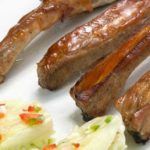

Leave a comment
Would you like to join the conversation?Feel yourself free of contribute